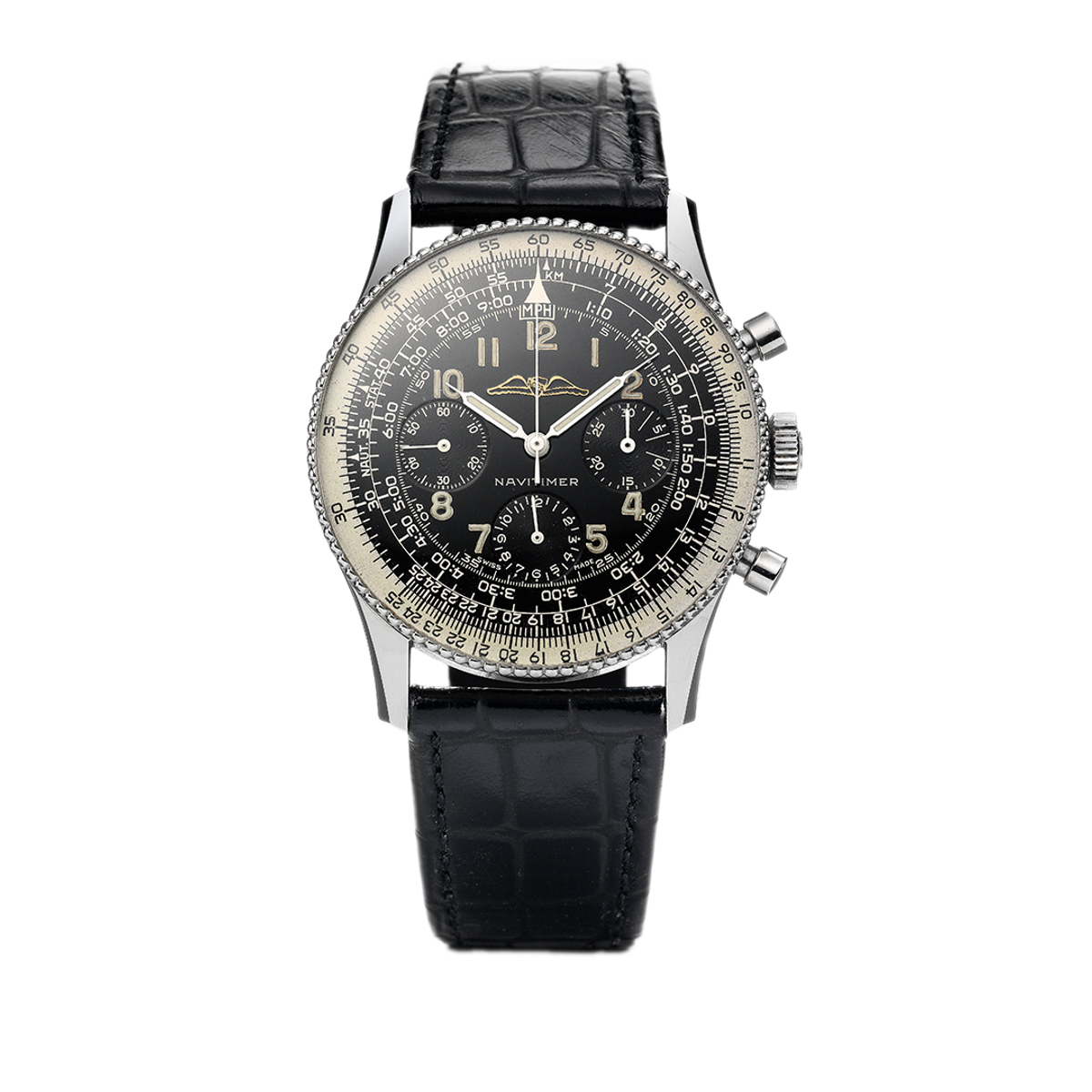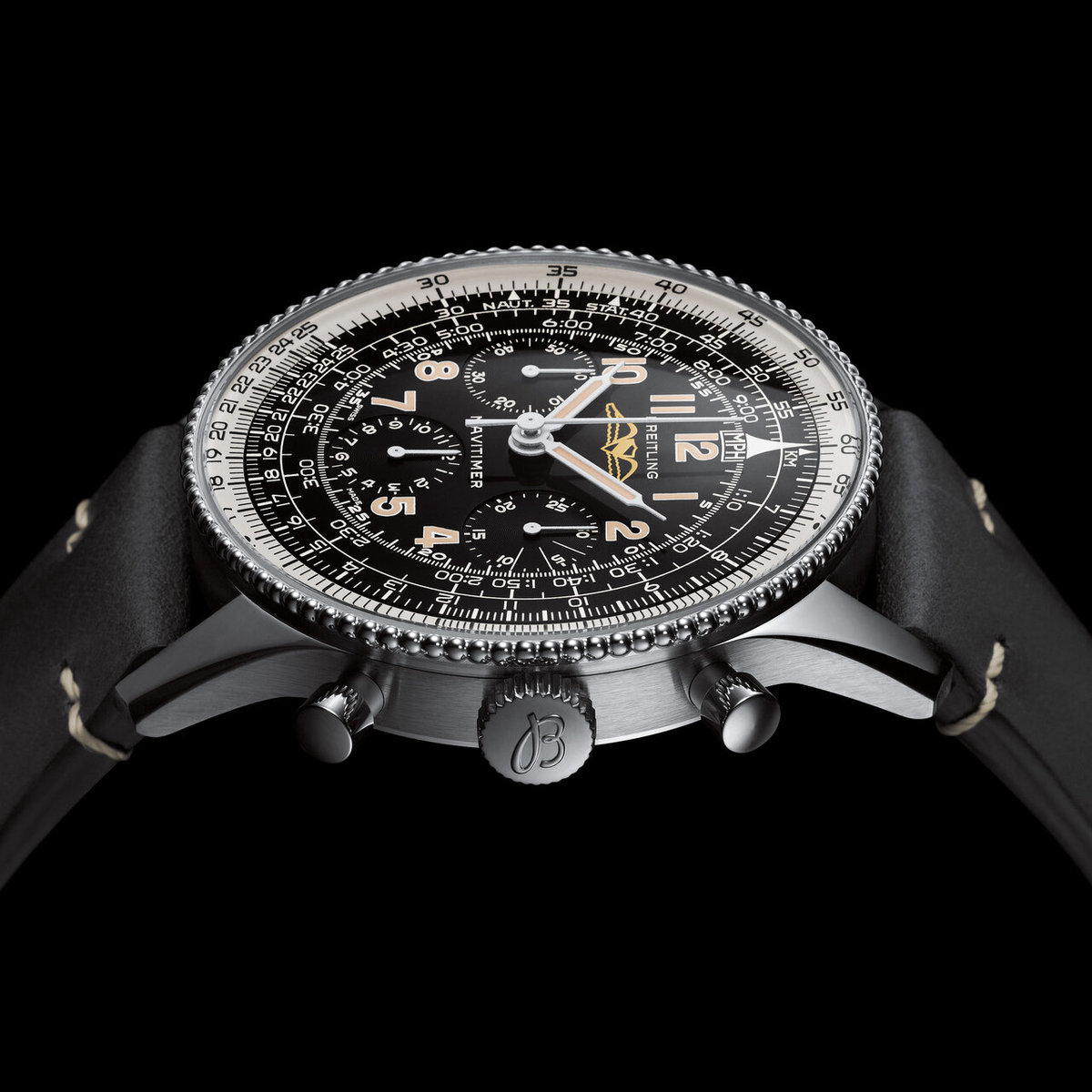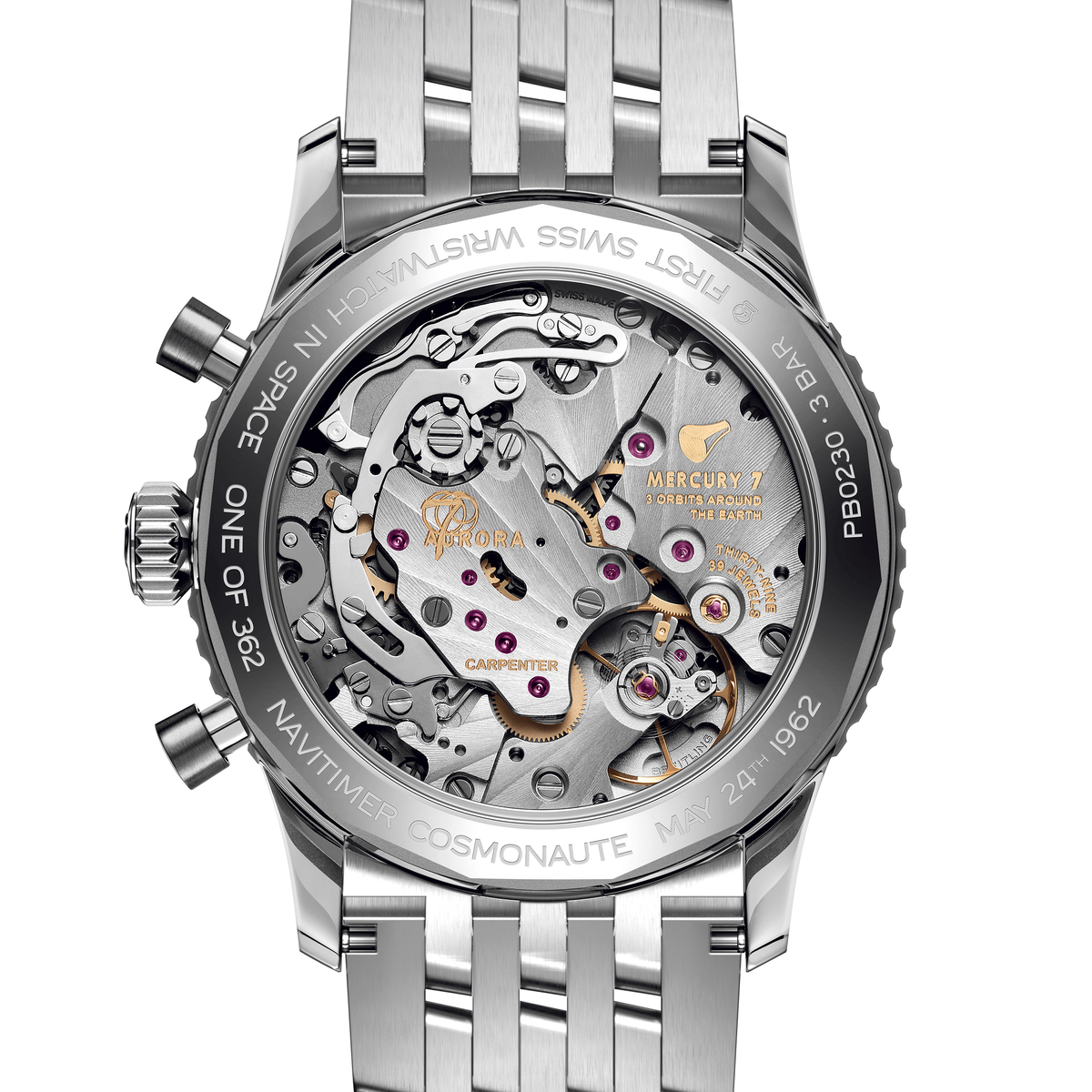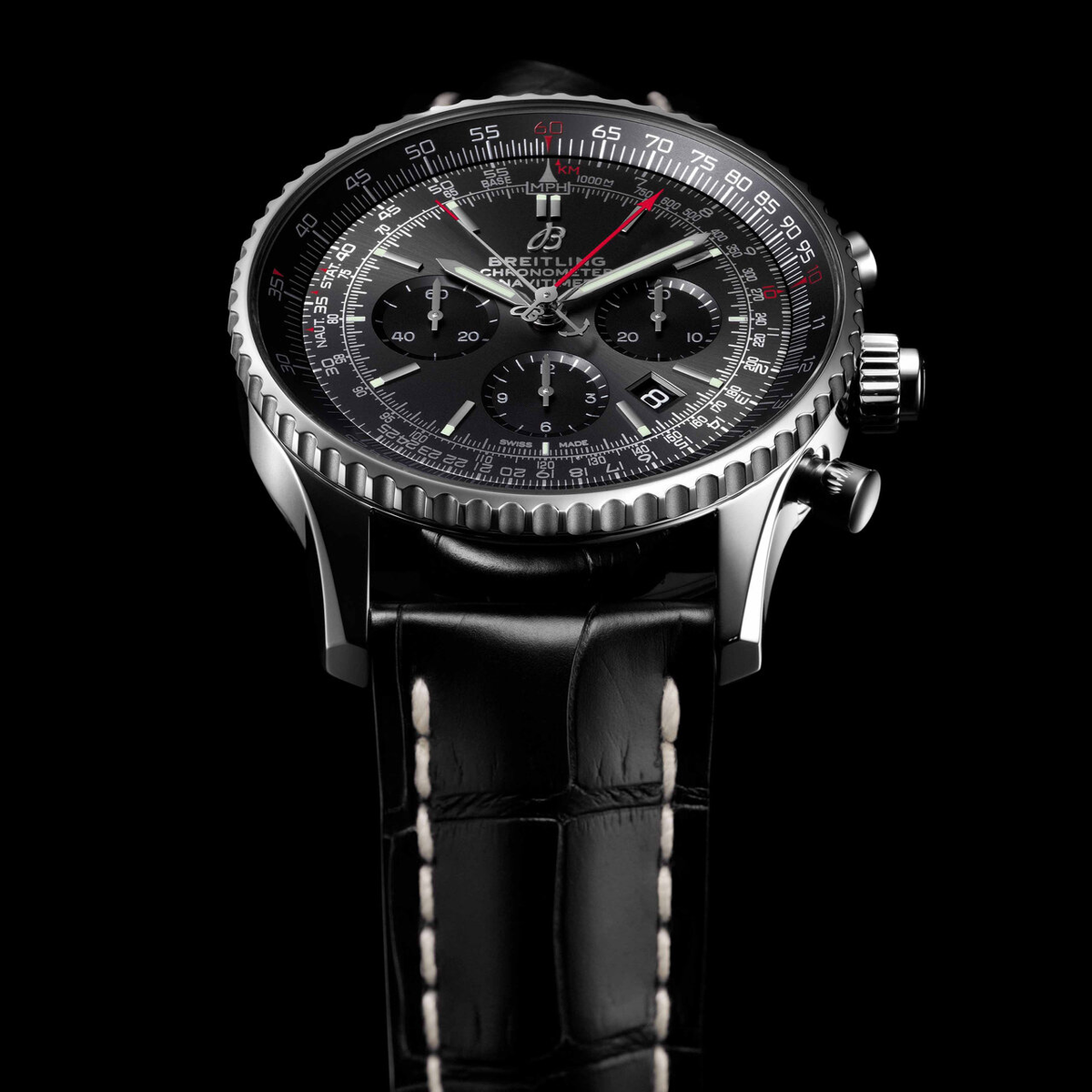The Navitimer's circular slide rule serves to perform around 20 calculations and conversions relating to airborne navigation.
Launch Year
1952
Functions
hours, minutes, seconds, chronograph, circular slide rule
Movement
mechanical manual-winding
Distinctive features
rotating slide rule enabling multiple calculations and conversions relating to airborne navigation
Right from its launch in 1952, the Breitling Navitimer asserted itself as a legendary model among pilots the world over. Breitling clearly intended this chronograph to become an authentic wristworn airborne navigation instrument.
The creation of the Navitimer was a natural extension of the ties Breitling cultivated with the aeronautical world. In 1936 the watch firm became official supplier to Royal Air Force pilots, and in 1942 achieved the same status for the US Air Force. Among the key assets of its timepieces was a circular slide rule that notably served to evaluate distances according to elapsed time. First unveiled on the Chronomat, this slide rule was also featured on the reference 806 Navitimer chronograph that launched in a new advanced version in 1952. It enabled the wearer, without any tools, to perform 20 or so calculations and conversions relating to airborne navigation: multiplication, division, converting miles/kilometres, currencies, Fahrenheit/Centigrade, gallons/litres, minutes/hours, seconds/minutes, as well as tachymeter, pulsometer, fuel consumption for planes and cars, speed per hour, minute or second, rate of climb or descent, distance in climb or descent, square root, cross-multiplication and compass.
These many functions – all easily performed by adjusting a graduated ring that moves over a second ring - were revolutionary in a wristwatch and were warmly received by pilots right the from the start. The Navitimer indeed established itself as the official watch of the Aircraft Owners and Pilots Association (AOPA), whose initials were combined with the wings of the Breitling logo on the first model issued in 1952.
The Navitimer caught the headlines again in 1962. Its tried and tested reliability and sturdiness made this chronograph a perfect instrument for accompanying astronauts on their missions. Breitling made history in the space race by taking part in the orbital flight of the NASA Aurora 7 capsule. On the wrist of American astronaut Scott Carpenter, the Navitimer thus became the first space-going wrist chronograph. The subsequent production model, named the Cosmonaute, reprised the 24-hour dial rather than the usual 12-hour dial, that had enabled Carpenter to keep track of daytime and night on Earth.
Breitling tried a new direction in the 1970s in response to the growing popularity of quartz, and released a digital version of the Navitimer – which was not a commercial success. In the early 1990s, the Navitimer made its grand comeback in the collection with a new – and this time mechanical – version equipped with the Valjoux 7750 calibre. It was not until 2009 that this legendary chronograph was equipped with the Manufacture Breitling Caliber 01.
The Navitimer still holds a key position within the Breitling collections. Available in diameters ranging from 46mm to 38mm – in its self-winding non-chronograph version – the Navitimer is currently the mechanical chronograph that boasts the world’s longest-running uninterrupted production. A tribute to a legend, the Navitimer Ref 806 1959 Re-Edition, launched in 2019, exactly matched the design of the original. That same year, the Navitimer B03 became the first split-seconds chronograph in the collection. A women’s version followed a year later in the form of the stylish Navitimer Automatic 35. More tributes came in 2022, this time in honour of the Navitimer that orbited Earth during the Mercury-Atlas 7 mission in 1962. This was also the 70th anniversary year, marked by new releases that preserve this icon’s distinctive circular slide rule, baton hour-markers, three chrono counters and notched bezel, while introducing a number of modern refinements. Cases in steel or red gold come as three diameters (46, 43 and 41mm) plus an array of dial colours.
Key Characteristics
- Wrist chronograph launched in 1952 and equipped with a slide rule



